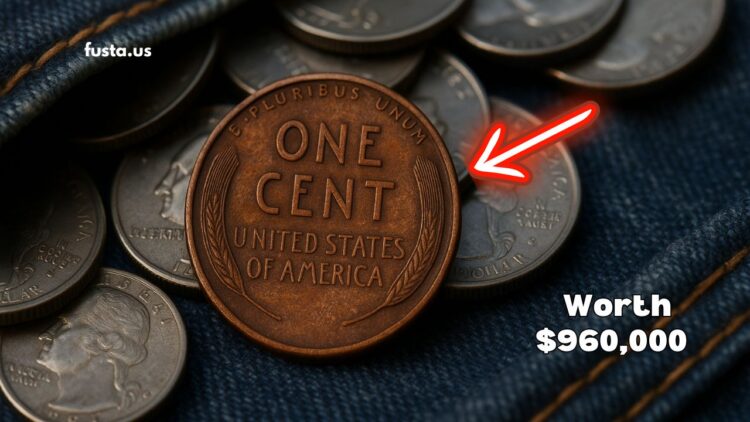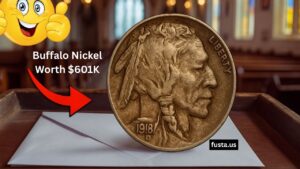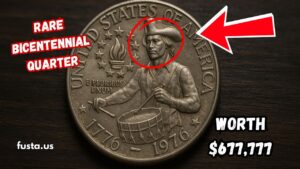What if the spare change in your pocket was worth nearly a million dollars? This isn’t a fantasy—it’s the reality behind one of the rarest and most valuable U.S. coins in existence: the 1943 bronze Lincoln Wheat Penny.
Recently valued at around $960,000, this coin is still believed to be in circulation, making it a potential treasure hidden in plain sight.
Why the 1943 Bronze Wheat Penny Is So Valuable
During World War II, the U.S. Mint changed the composition of pennies from copper to zinc-coated steel to save copper for ammunition and military equipment. However, by error, a few bronze planchets (the copper blanks used for minting coins) were struck with the 1943 date.
These rare coins—only about 20 to 30 examples are known—have become legendary in numismatics. Their scarcity, coupled with historical significance, has pushed their value to astonishing levels.
One of these pennies sold for close to $960,000, proving that sometimes even one cent can be worth a fortune.
Other Valuable Lincoln Wheat Pennies
The Lincoln Wheat Penny series, minted from 1909 to 1958, includes several highly sought-after rarities. Here are some standout examples:
| Penny Type | Reason for Value | Potential Value |
|---|---|---|
| 1943 Bronze Wheat Penny | Minting error during WWII | Up to $960,000 |
| 1943-D Bronze Penny | Only one known from Denver Mint | Over $1.5 million |
| 1909-S VDB | First issue, low mintage, controversial initials | $300,000+ |
| 1958 Double Die Obverse | Rare design error | Around $336,000 |
| 1914-D Wheat Penny | Low mintage from Denver | Over $150,000 |
Could One Still Be in Your Pocket?
Yes—it’s possible. Many of these coins entered circulation unnoticed. Collectors and lucky finders have discovered them in:
- Old coin jars
- Estate sales
- Rolls of coins from banks
- Random change in daily life
Because the coin looks like an ordinary penny at first glance, many remain unrecognized to this day. That means one could still be sitting unnoticed in a collection—or even in your pocket.
How to Spot a Rare Lincoln Wheat Penny
To identify whether you have one of these hidden gems, here are some tips:
- Check the date: Look closely for a 1943 stamp.
- Test the metal: Bronze pennies appear copper-colored and are not magnetic, unlike the steel pennies of that year.
- Weigh it: Genuine bronze pennies weigh about 3.11 grams, while steel pennies weigh around 2.7 grams.
- Look for mint marks: Coins with “D” (Denver) or “S” (San Francisco) mint marks can be even rarer.
- Examine condition: Coins in pristine, uncirculated condition command much higher prices than worn ones.
If you suspect you’ve found one, it’s best to have it authenticated by a professional grading service.
Why Collectors Pay So Much
Three main factors drive the value of rare Wheat Pennies:
- Scarcity: With only a handful known, demand far exceeds supply.
- Historical context: The WWII-era error makes it historically significant.
- Condition: Coins in better condition—especially those with original luster—can skyrocket in value.
Together, these factors make the 1943 bronze Wheat Penny one of the most sought-after coins in American history.
The 1943 bronze Lincoln Wheat Penny proves that even the smallest coins can hold extraordinary value. With one recently valued at $960,000, and others fetching millions, this rare piece of history might still be waiting to be discovered in circulation.
So next time you sift through your change, take a closer look—you might just uncover a penny that’s worth nearly a million dollars.
FAQs
Can a regular 1943 penny be valuable?
Most 1943 pennies are steel and worth very little. Only the rare bronze versions reach values approaching $960,000.
How can I check if my penny is bronze or steel?
Use a magnet test. If it sticks, it’s steel. If not, and it looks copper-colored, you may have a rare bronze version.
Where should I sell a rare penny if I find one?
Reputable coin dealers and auction houses are the best places to sell. Always get your coin authenticated first to secure its value.




